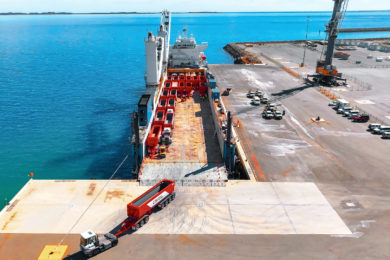The Boundary Dam Integrated Carbon Capture and Storage (CCS) project is SaskPower’s flagship CCS initiative. Through the development of the world’s first and largest commercial-scale CCS project of its kind, SaskPower is making a viable technical, environmental and economic case for the continued use of coal. Mike Monea, President, Carbon Capture and Storage Initiatives, SaskPower, notes: “Last October, I had the pleasure of inaugurating the Boundary Dam Carbon Capture and Storage project. I hosted industry, government and media representatives from more than 20 countries at our coal-fired power station in Estevan, Saskatchewan. I also welcomed Brad Wall, Premier of Saskatchewan and the Canadian Minister of Natural Resources Greg Rickford to celebrate the occasion and say a few words on what an important breakthrough this project truly is. This represents a major step forward for environmentally sustainable coal power and for the future of the power production and oil industries.
“Following extensive analysis, feasibility studies, community outreach and regulatory evaluation, the Boundary Dam project was built over the course of three years. Construction required unprecedented co-ordination of resources and expertise; we used more than 60 contracted companies such as Shell-Cansolv, SNC-Lavalin, Hitachi-Mitsubishi, Babcock and Wilcox, Stantec and Graham Construction to bring engineering, chemical and design expertise to our project. A total of approximately 1,700 contractors and SaskPower employees worked around the clock for a total of nearly five million man-hours. I’m proud to say that tally came without a single time-lost injury. SaskPower is committed to public and employee safety first and foremost. Carbon capture and storage at Boundary Dam Power Station is now a proud part of SaskPower’s fleet and of Saskatchewan’s proven track record in technological innovation.
“Now operational for several months, we are pleased to see that the process is working even better than expected. We’ve already captured more than 100,000 t of carbon dioxide at the facility, compressed it and sent it to nearby oilfields for enhanced oil recovery. This CO2 will be pumped into the oilfields, brought back up with hard-to-reach oil, and then re-injected continuously. When operations finish, it will all be permanently and safely stored underground.
“We’ve been fine-tuning our carbon capture plant and things are progressing very well. We have been running at 80% efficiency and expect to reach the full 3,200 t/d capture in the near future. We are on-track to capture up to 1 Mt in 2015. That represents approximately 250,000 vehicles off our roads every year at a capture rate of 90%, that’s leaps and bounds beyond comparable projects around the world. At the same time, the BD3 power plant unit has performed better than expected. At this moment, Unit 3 of Boundary Dam Power Station is producing power for 100,000 homes and businesses, while running about four times lower CO2 emissions than a comparable natural gas plant. This project means being able to keep coal in our power generation mix by bringing emissions in compliance with new federal regulations. Coal is one of the affordable, reliable sources of power for us that will have a stable fuel price for decades to come. We have centuries of coal reserves under Saskatchewan and it’s an important part of our economy. In short, CCS is our way of bringing that fuel source into the 21st century.
“Our own public opinion research shows awareness and support of carbon capture technologies in Saskatchewan, however some misconceptions still remain. Some still call this technology ‘unproven’; CCS has been around for decades and it now exists on a commercial scale right here in Saskatchewan.
“Others comment on the price tag of implementing CCS technology. As with any first-of-a-kind, our project represents a sizeable investment (approximately C$1.467 billion), and it paves the way for economies of scale and efficiencies on future projects. Already, we’ve identified savings of up to 30% on any future project and as new projects learn from us, costs will continue to decrease.
“Finally, some comment that Boundary Dam won’t make a dent compared to the emissions the US or China are releasing into the atmosphere. On the contrary, the US and China have both been here to see our project, the world’s first on this scale and on a coal plant. If we can influence policy and future power generation decisions in the world’s largest economies, SaskPower will have done its part. We are producing affordable coal power in our province, and we’re a world leader on this practical, long-term solution to global climate change.
“As we continue to operate the Boundary Dam project and gain unique knowledge, we welcome governments, organisations and industries to learn about our experience. The future is here and now and coal will be a part of that.” Further information is available at: http://www.saskpowerccs.com









